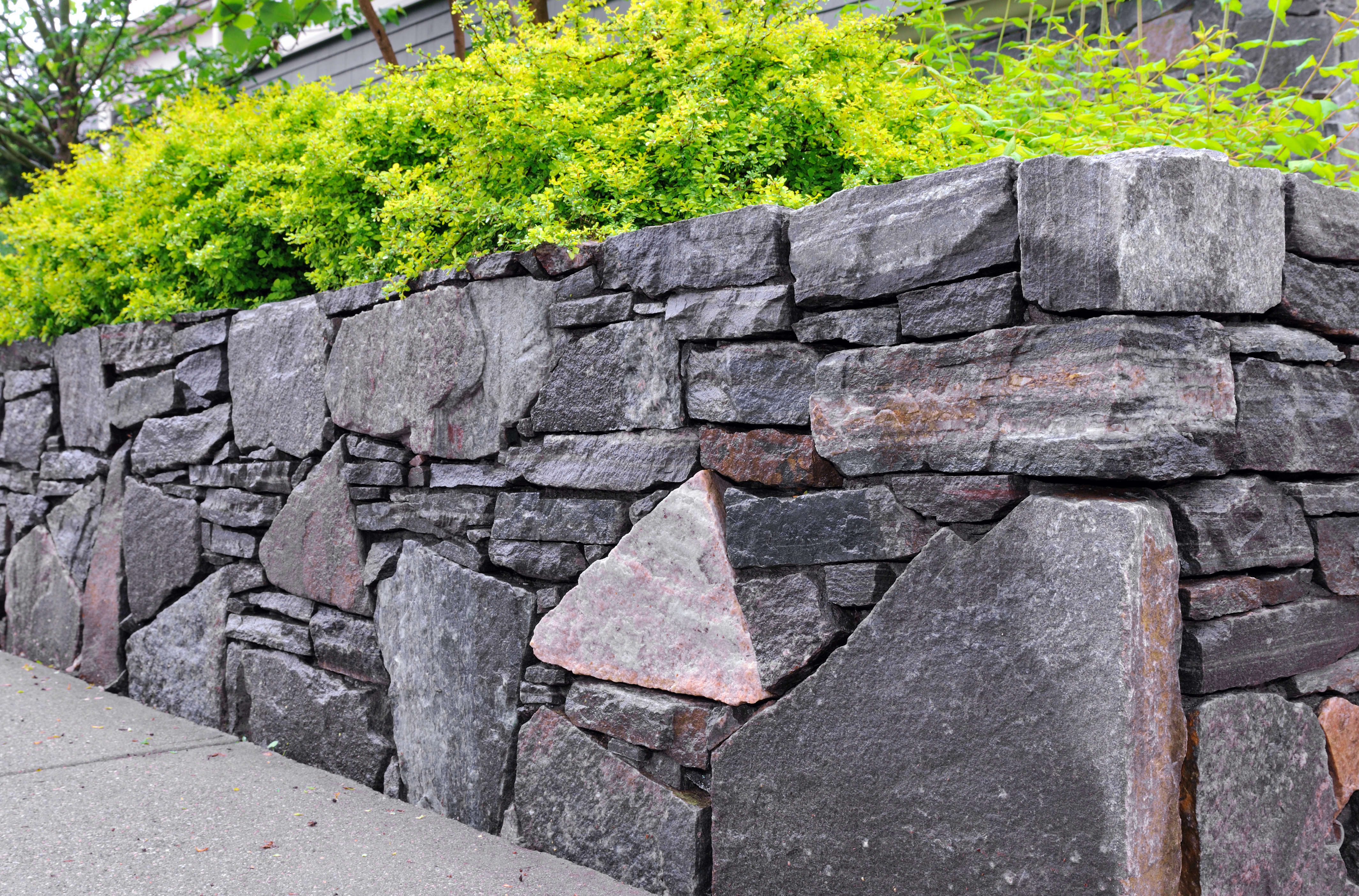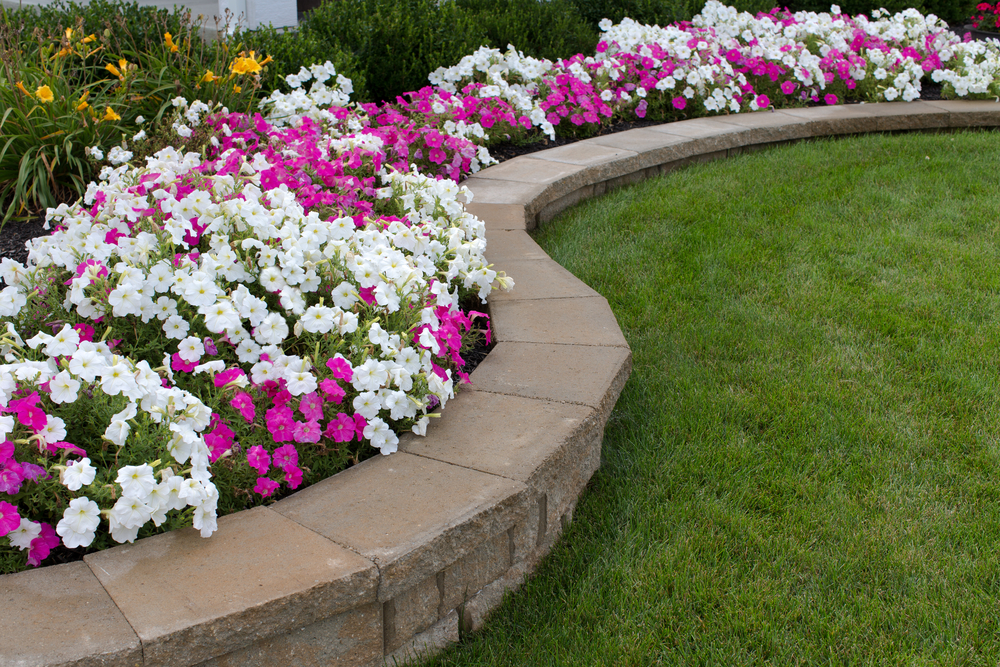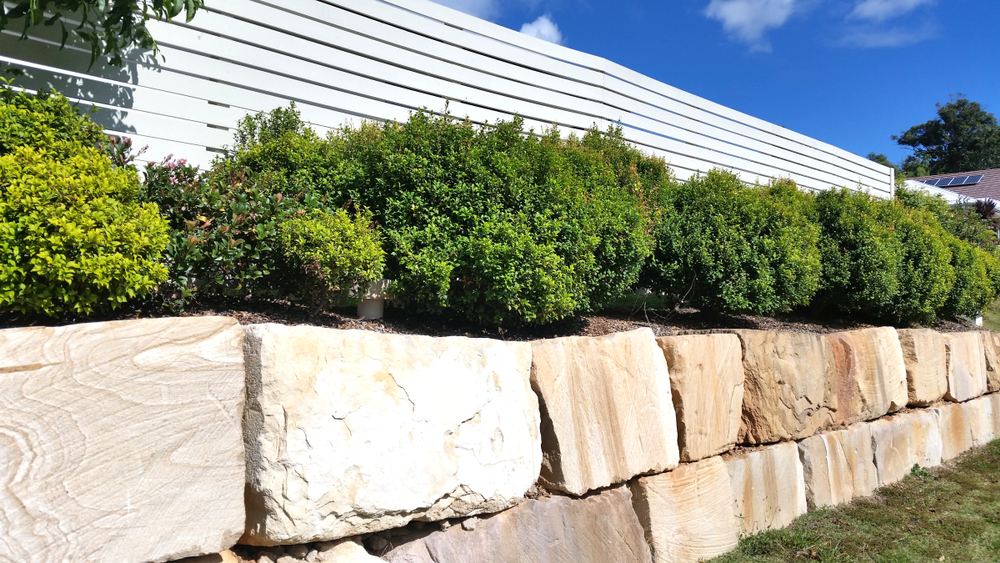Retaining Walls
A retaining wall is simply a structure that holds back dirt, water and other materials. These retaining wall structures can be used for garden aesthetic reasons, but they are mainly built to prevent erosion or the collapse of high ground on to a particular structure or general area. The retained earth is usually referred to as backfill, a term that's also used as a verb to describe putting more dirt behind the wall to make the ground level. If you have a contoured lot, retaining walls could be the answer.
What Is The Best Retaining Wall Material
Well, retaining walls can be built from various materials using different techniques. Of course, there are several factors that influence the best choice for each situation, and they include the height of the wall, the characteristics of the soil, the groundwater conditions as well as the cost. Our retaining wall specialist landscapers can guide you on weather you should be using stone, concrete, timber or any other material for your retaining wall
How Much Do Retaining Walls Cost
Retaining wall costs revolve around the length and height of the are you are wanting the retaining wall to be built. We will carry out a thorough consultation so we can determine the foundations, soil integrity & manage any risks so your retaining wall lasts for decades, as opposed to a few years. If you are wanting to find out how much a retaining wall will cost then give us a call to have a chat.
Concrete Retaining walls are an an excellent material for building retaining walls due to the sheer strength & durability. There's a proper and wrong manner of building a concrete retaining wall, and this is why it's important to choose the right landscaper. There are numerous designs that can lead to an excellent retaining wall structure, but one thing is certain: there has to be a footer beneath the structure to ascertain success. Concrete is undoubtedly one of the most durable construction materials known to man. It not only offers durability benefits but many decorative options as well. If you don't like the plain, white or dull colour, you can use coloured concrete, stain the wall after it has cured, apply a vertical stamp material or even pour into a patterned form. Sealing the concrete retaining wall can make the surface easy to maintain, leaving you with an aesthetically pleasing structure that does its job. Another huge benefit of choosing a concrete retaining wall is the lack of maintenance required.
Block Retaining Walls
Blocks that stack together to make a retaining wall make the construction look as simple as building legos, but that is never the case. These retaining walls ideally need to have a significant footer for them to support not just the weight of the dirt but the weight of the structure itself. These blocks or paver stones tend to give a distinct, appealing look, but there might even be a need to erect another retaining concrete wall behind the blocks if the lateral pressure is too much. In this case, the blocks would be a visual feature while the concrete acts as the structural element.
Timber Sleeper Retaining Walls
Timber sleeper retaining walls might be ideal for a retaining wall & might be the best looking option, but it's usually susceptible to rot and termite infestation over time. Our Landscape design team would suggest to have some form of metal or concrete support behind the timber sleeper retaining walls to maintain its integrity should wear and tear impact the timber sleeper. It's labor intensive, but it's lightweight and quite strong if appropriately constructed. A concrete footer to attach the wall is usually recommended in order to prevent it from shifting. Also, the construction often requires a clear area to be backfilled after it's finished and so, it's not always the best material if you are planning to replace an existing retaining wall. It will also require drains and weep holes as standing water behind the wood will just increase the risk of rot. Talk to your Melbourne Landscaper for any timber sleeper retaining wall projects
Brick Retaining Walls & Stone Retaining Walls
Stone retaining walls & brick retaining walls are becoming increasingly popular as a key feature in a garden or al fresco setting. Stone retaining walls are one of the most popular materials for retaining walls again due to the strength, durability and lifespan. These materials often look traditionally classy and more permanent. However, as with most of the other materials, there's still a need to have a concrete footer below grade to hold the weight of the structure and ensure the integrity of the wall. Like paver systems or architectural blocks, there might be a need to put a concrete retaining wall behind the bricks in order to ensure the success of the structure.
These are some of the most common materials used in building retaining walls. If you want to separate lawns and mulches, fix eroded soil or even raise your garden bed to a manageable working height, then get your free on-site and no obligation consultation today by contacting us!
If you have a Retaining Wall project in mind and you are in Melbourne give us a call and our Landscape designer will come to you and provide an on-Site Quote.




